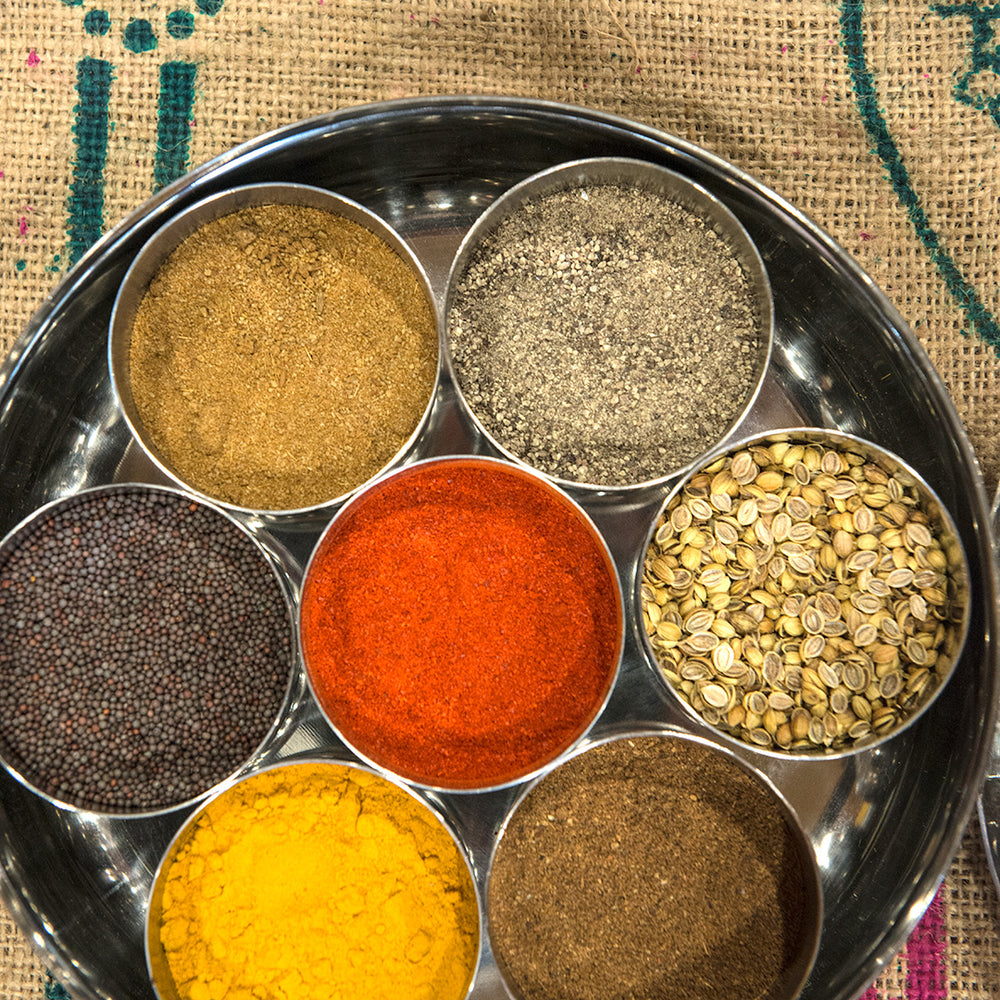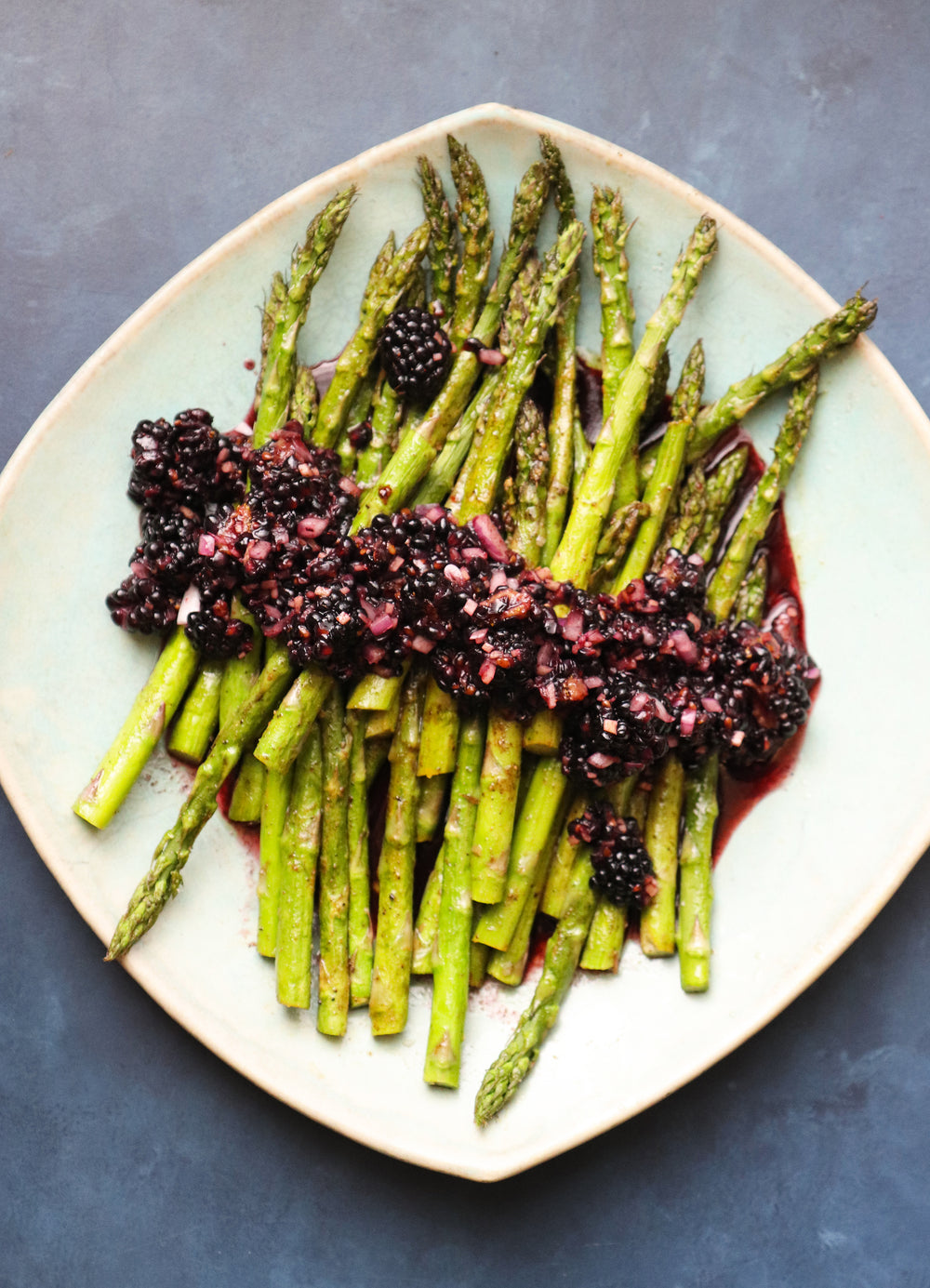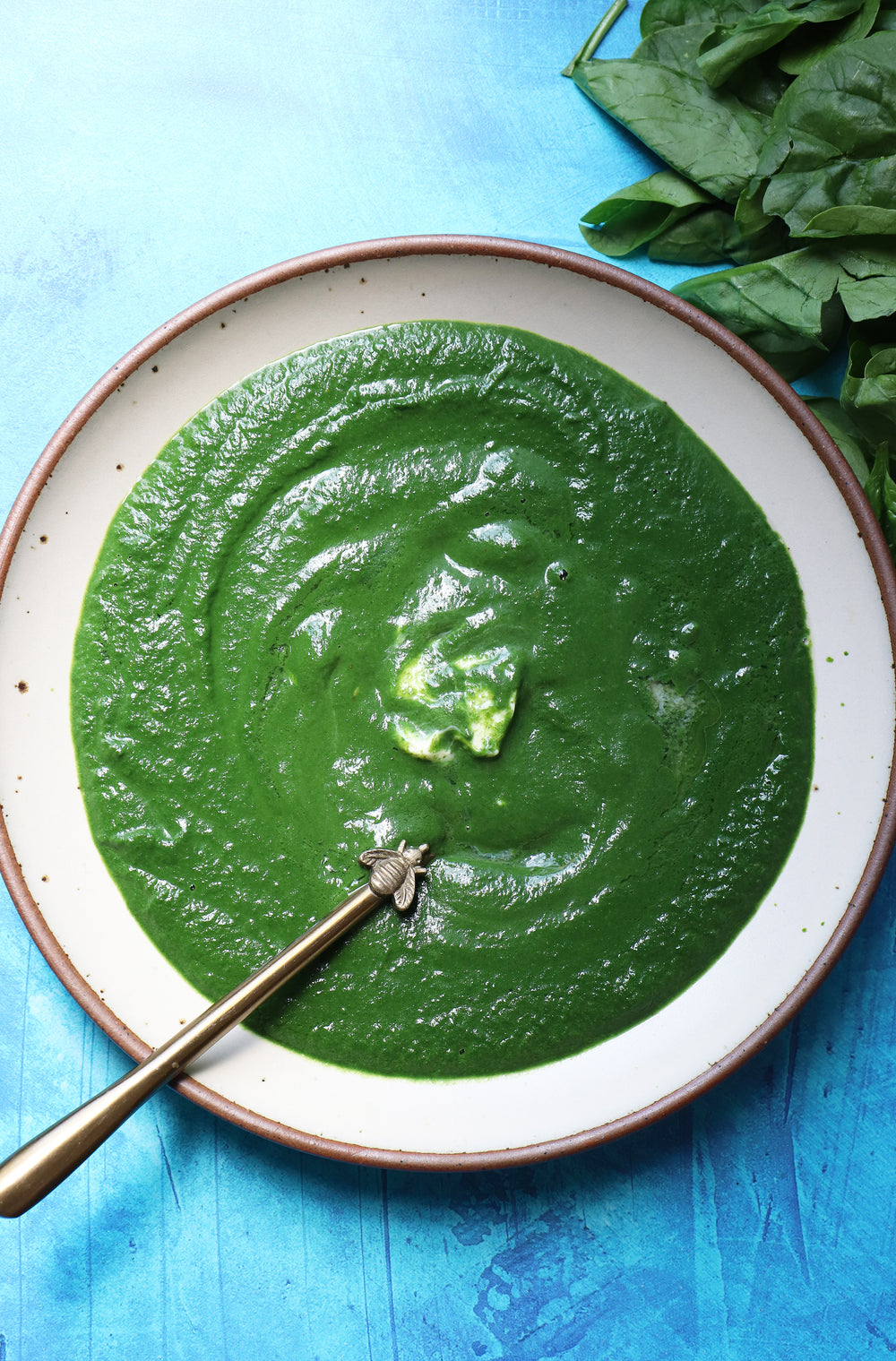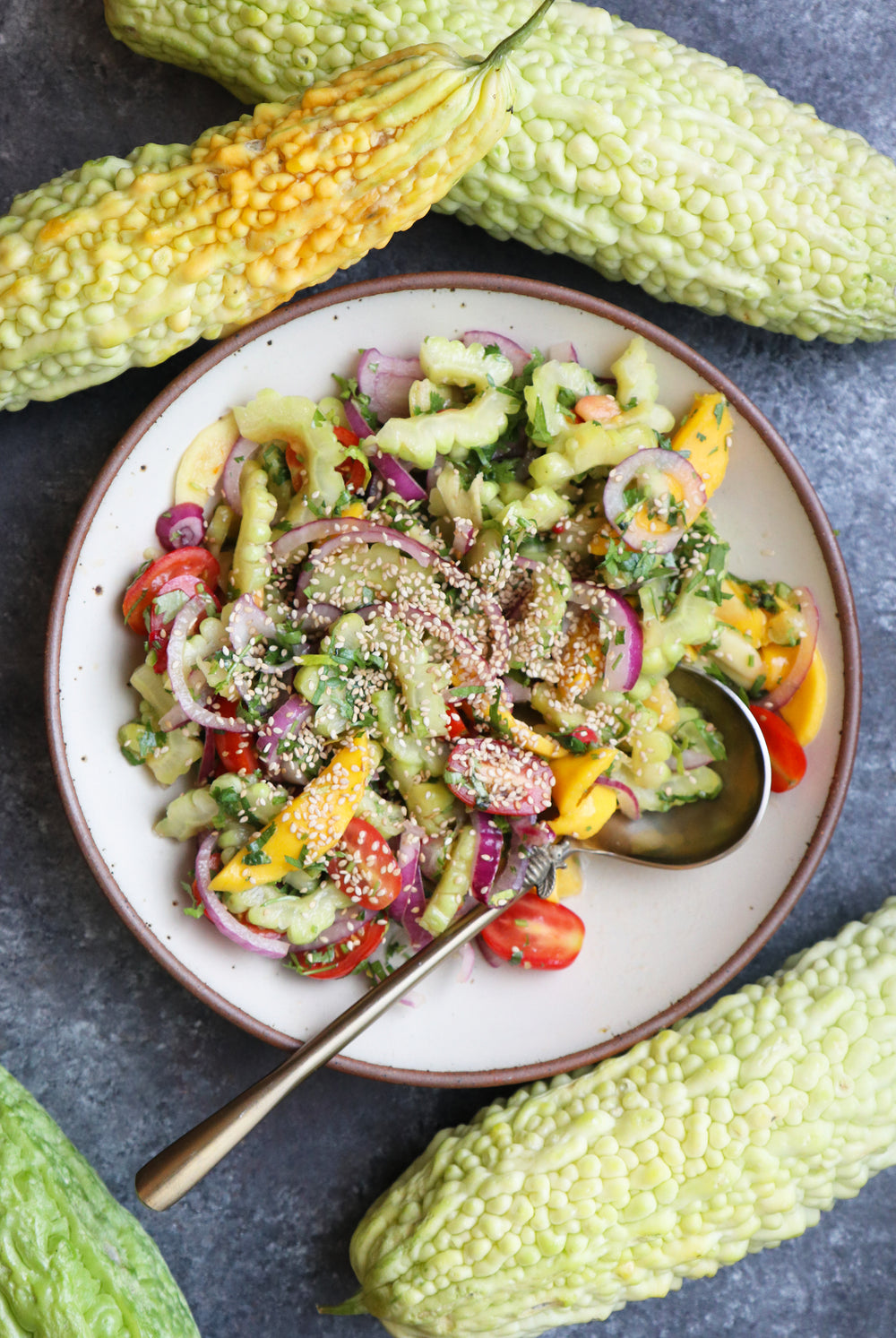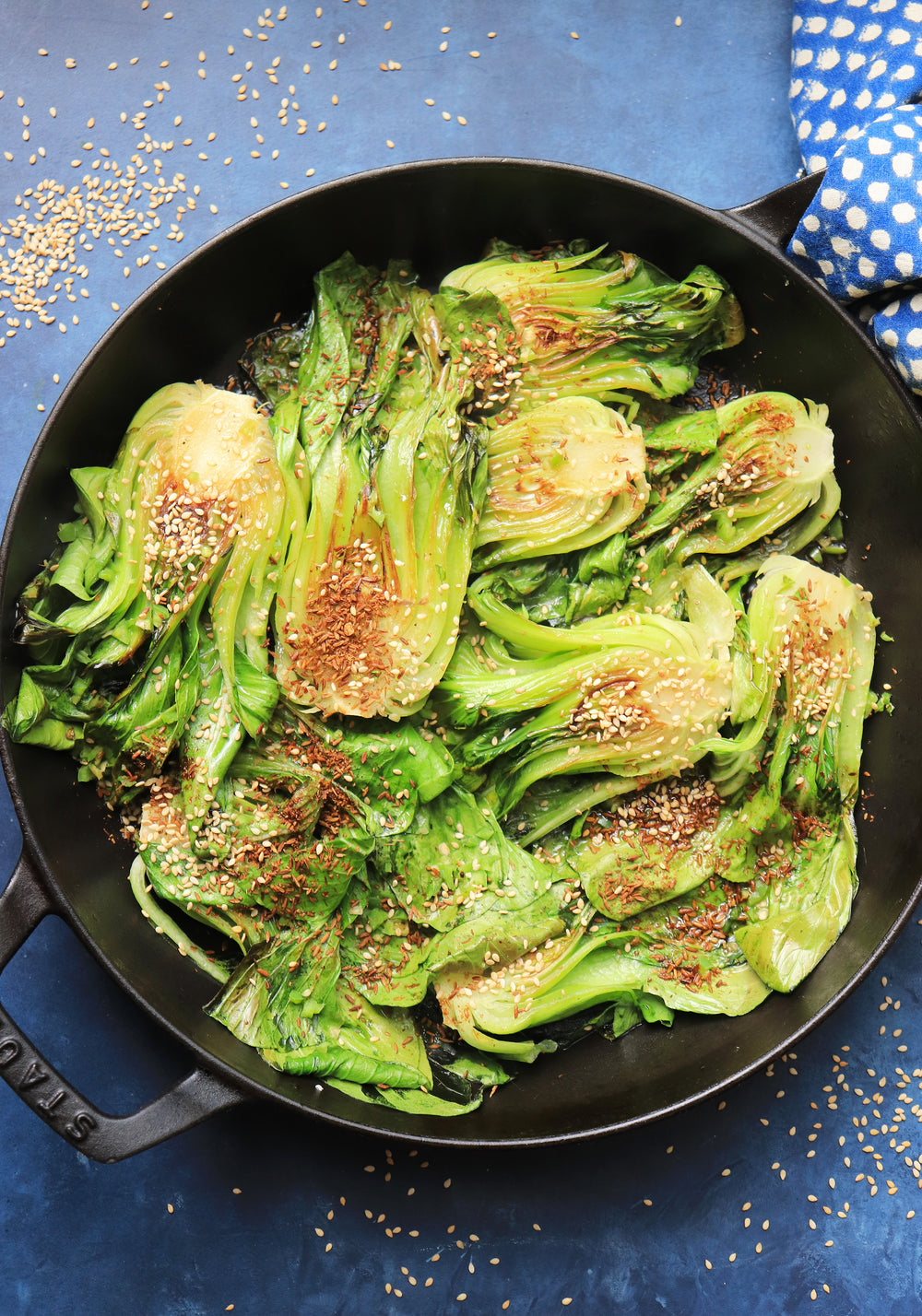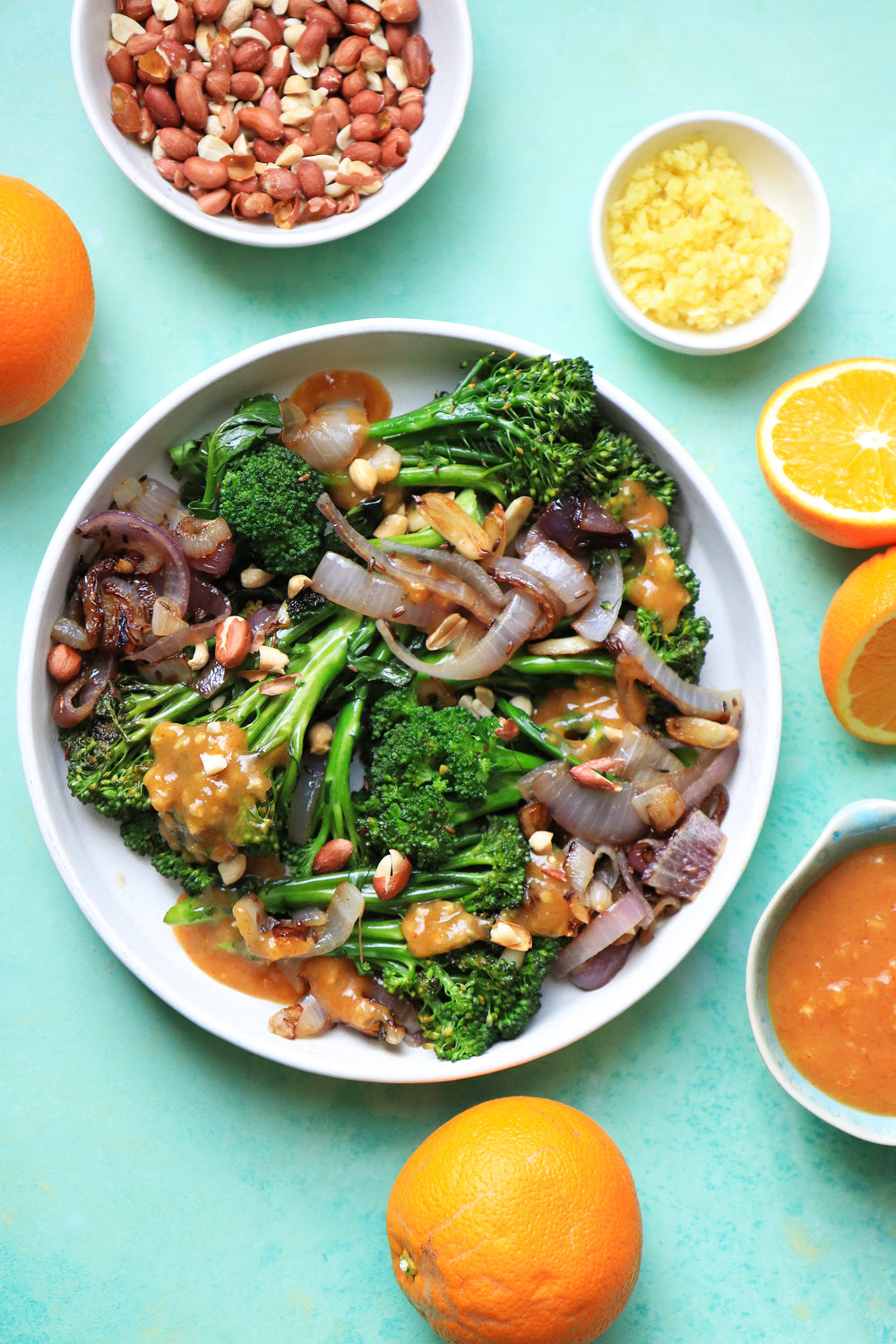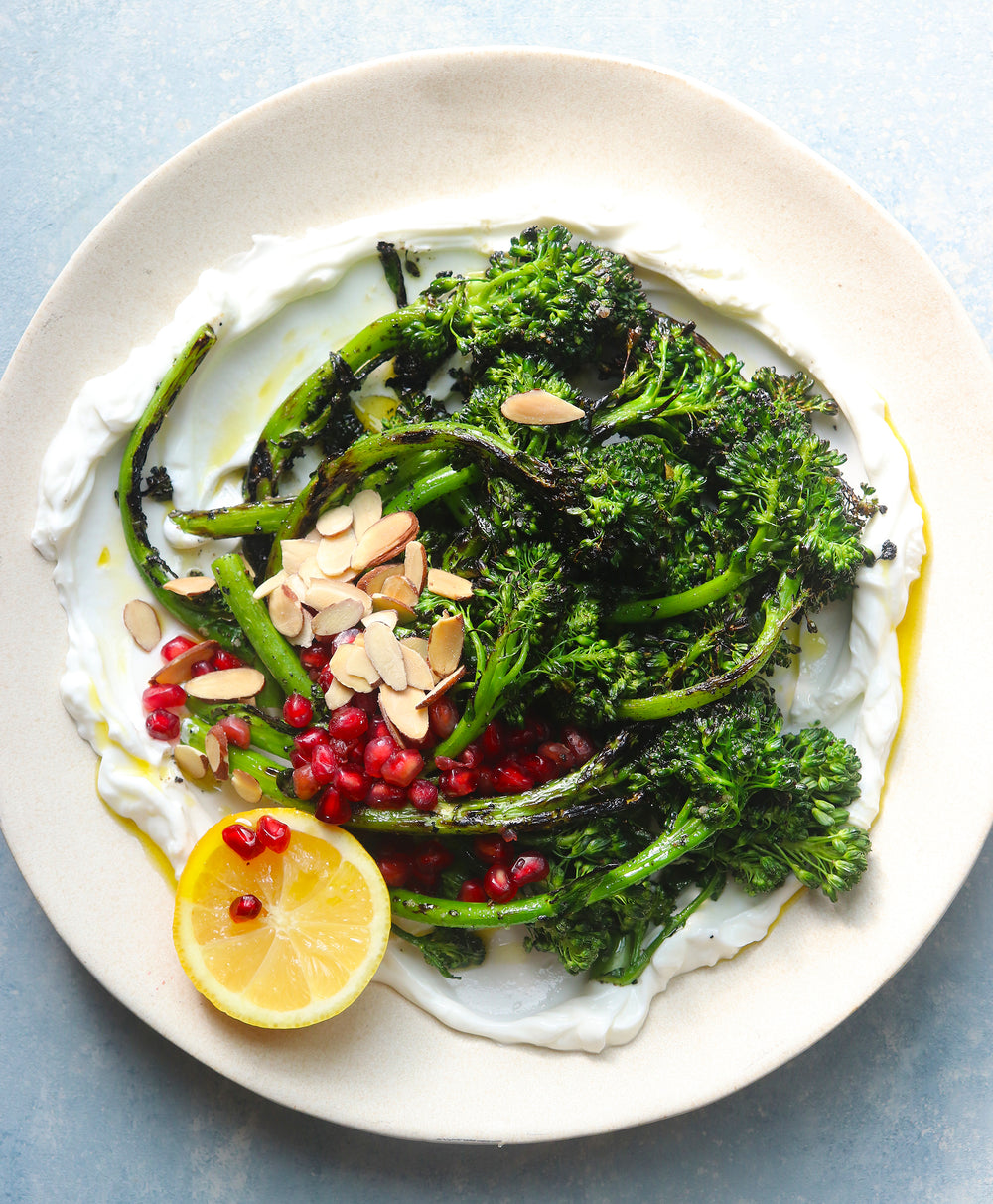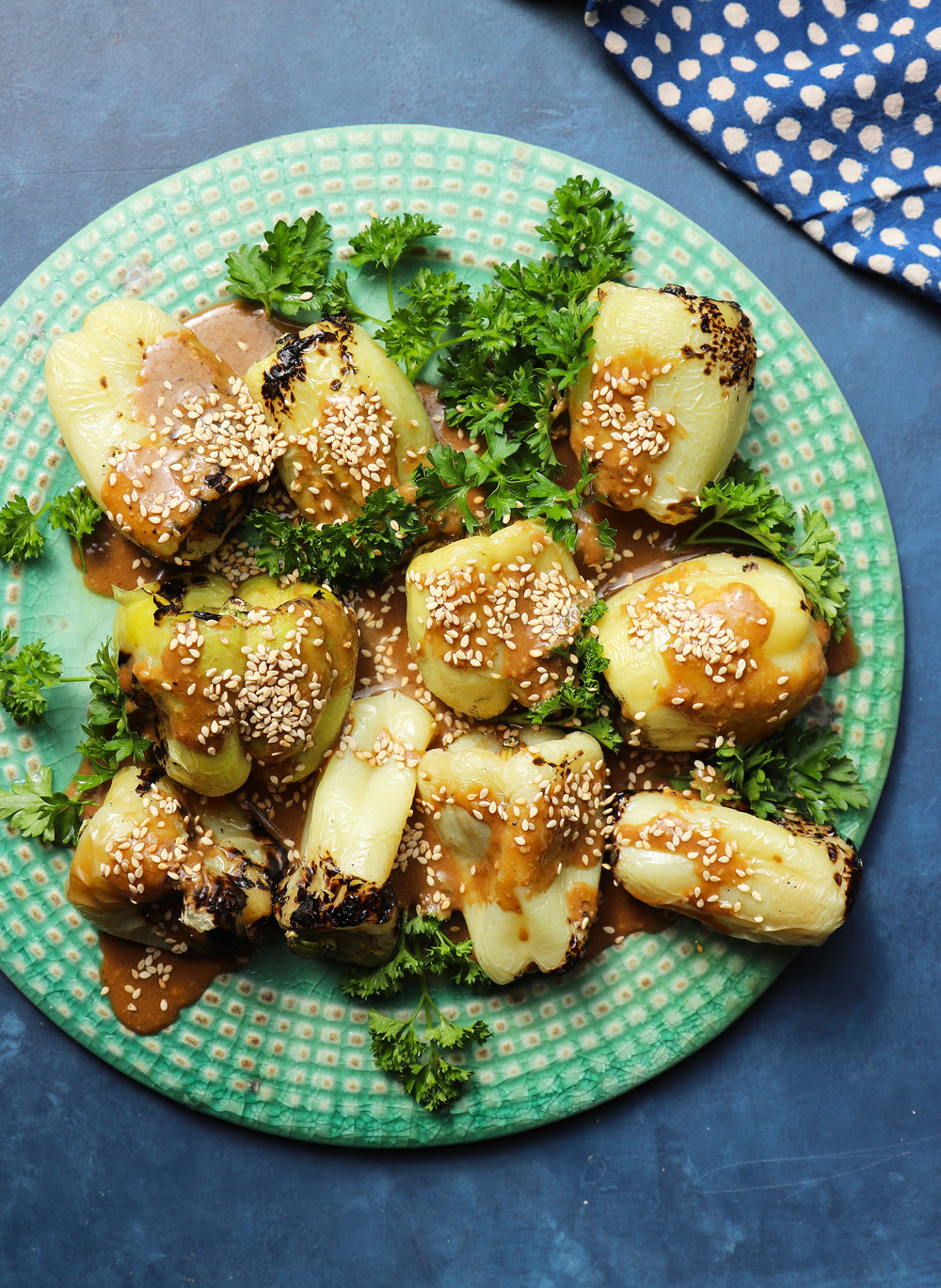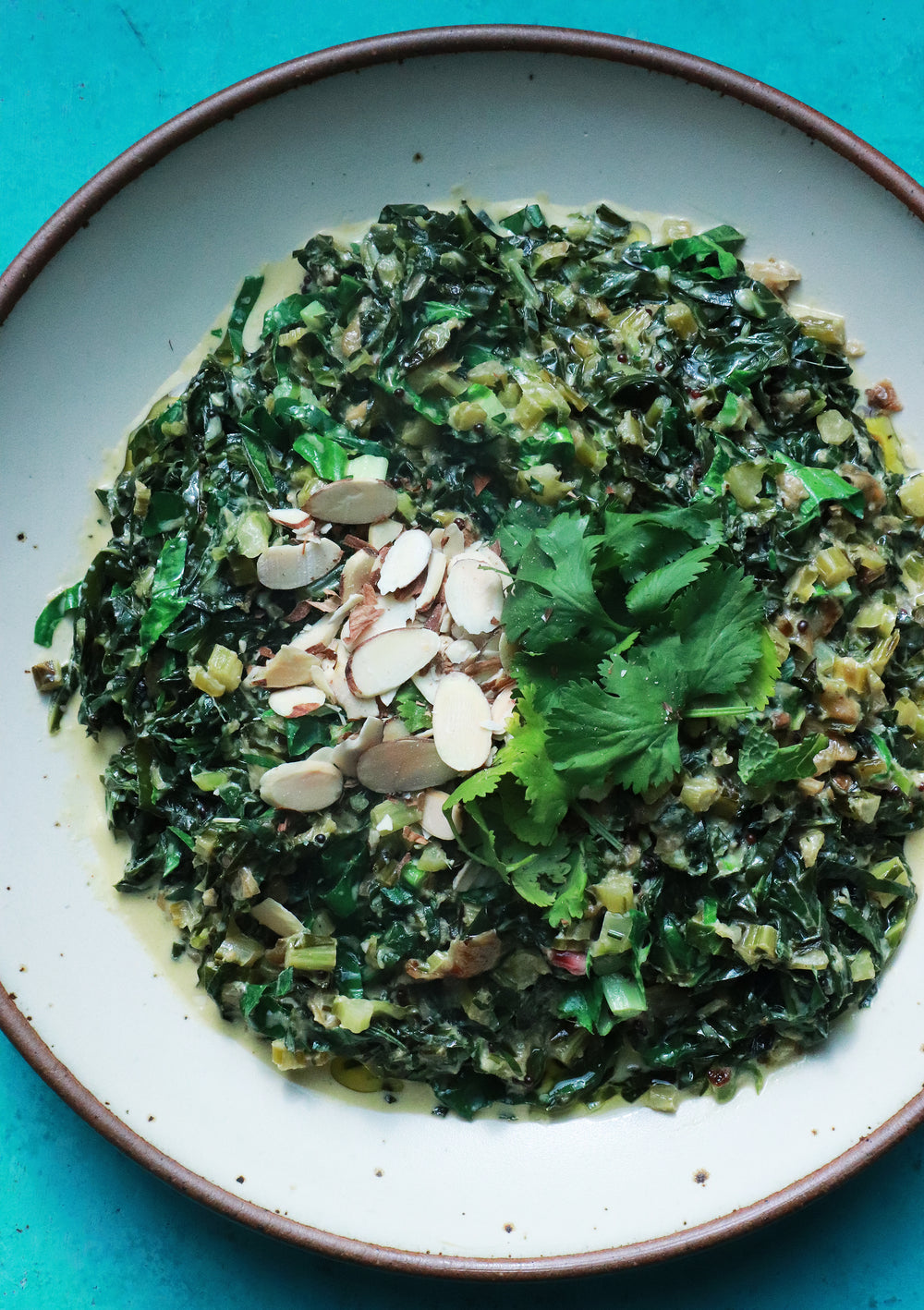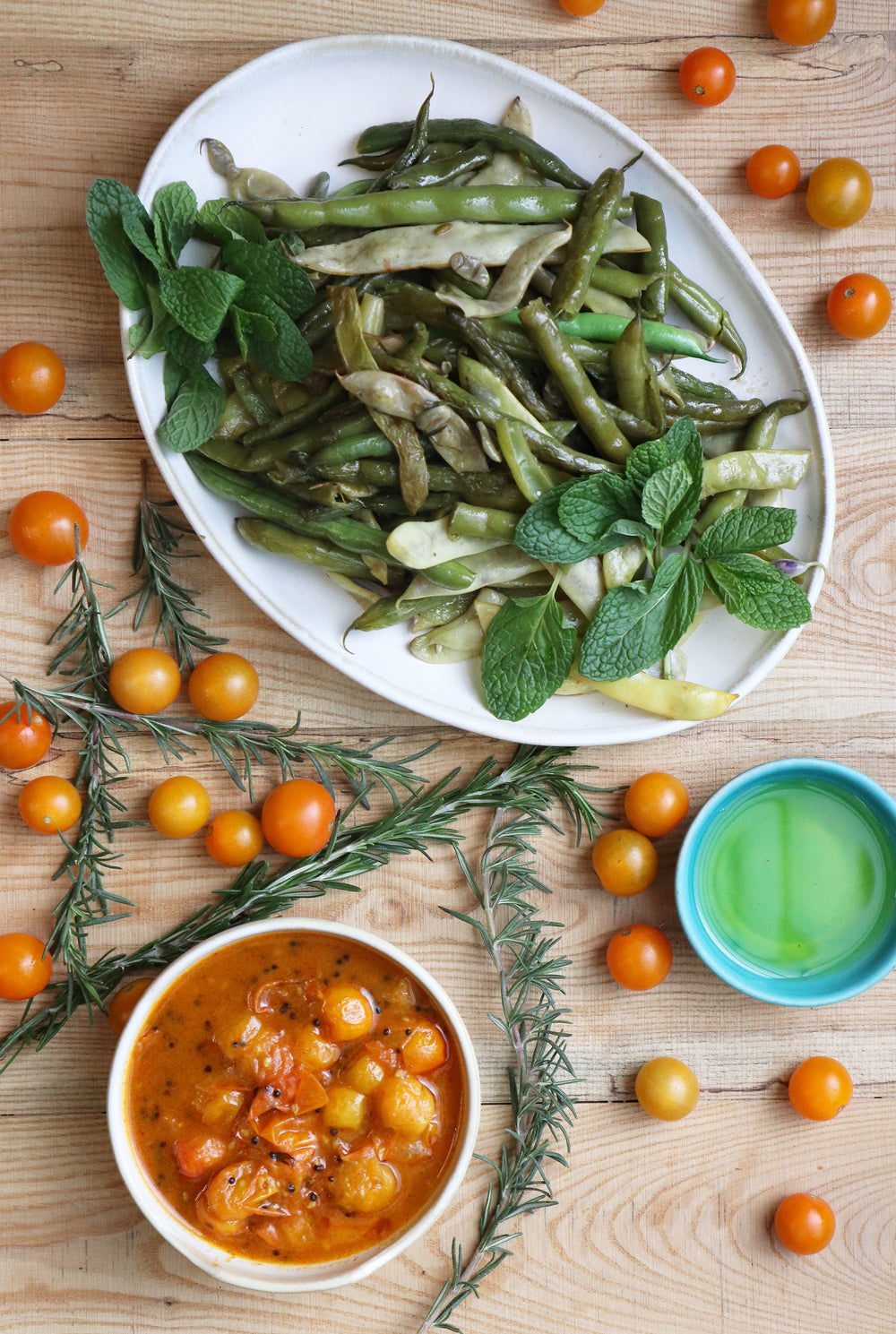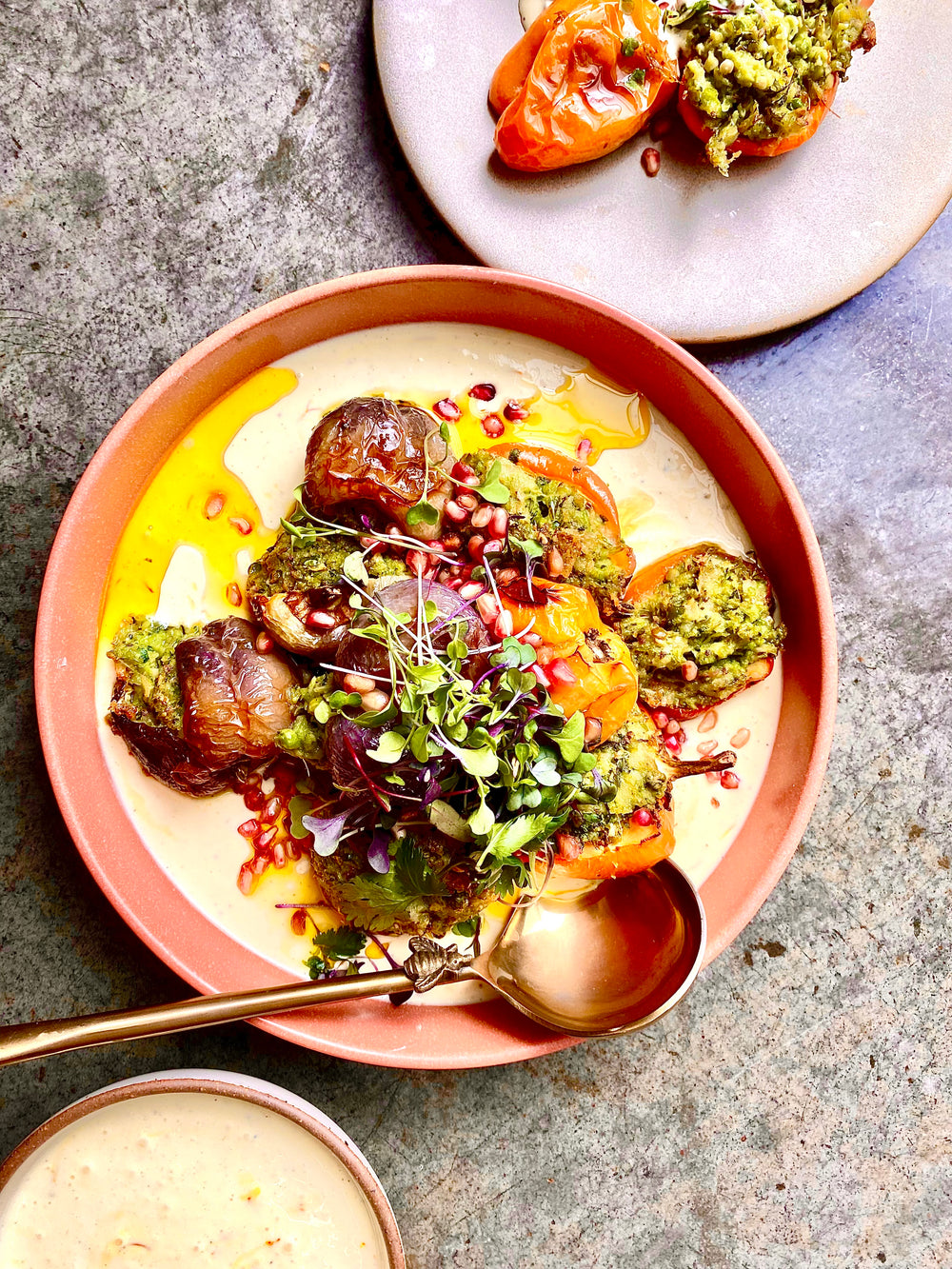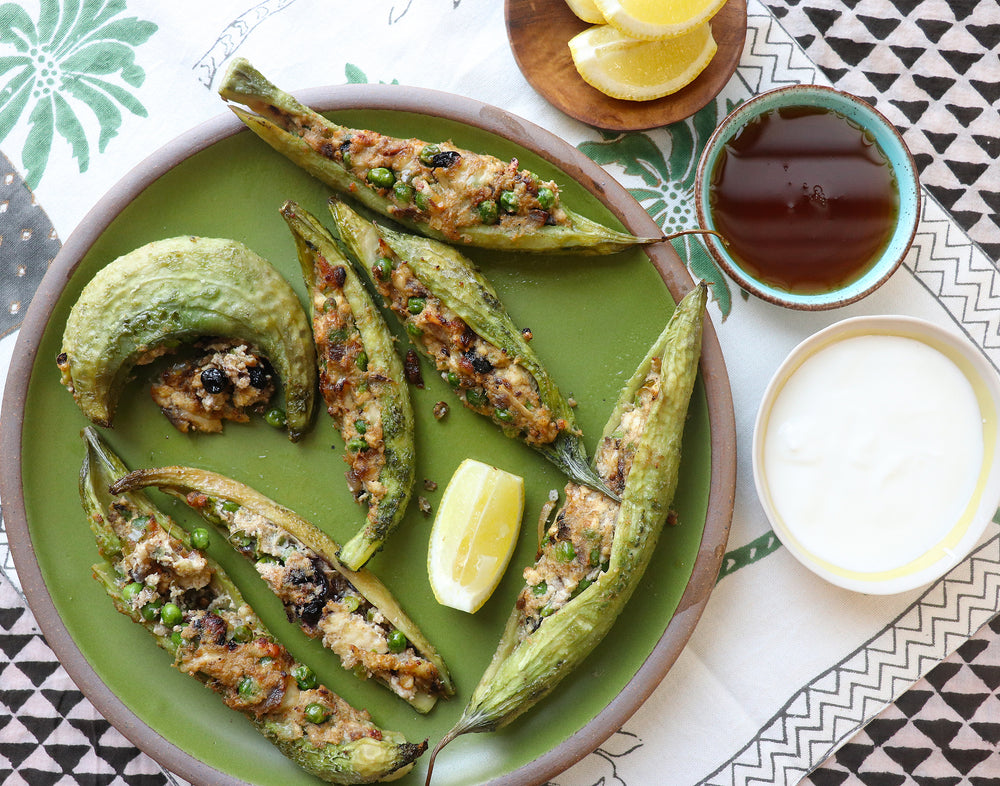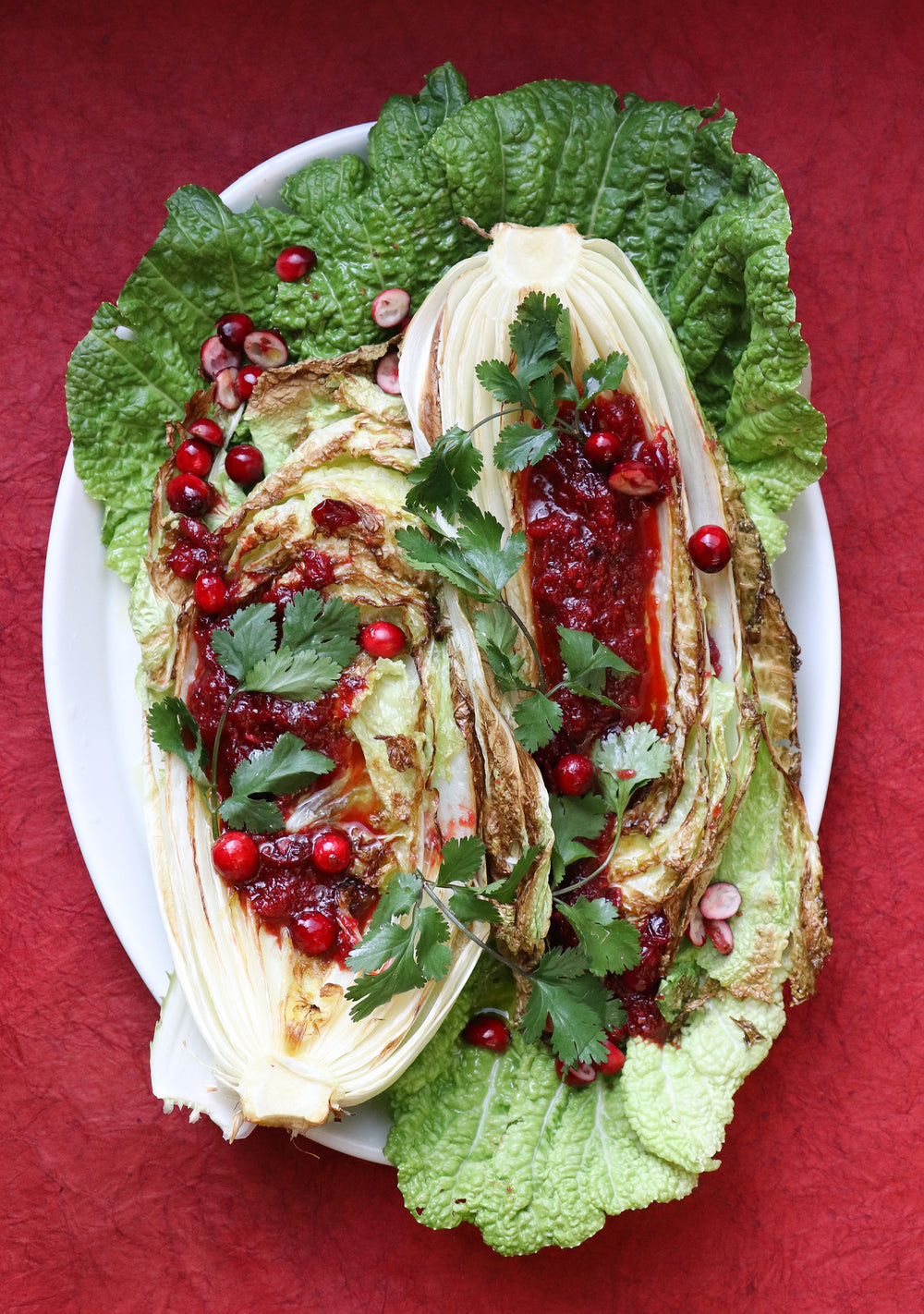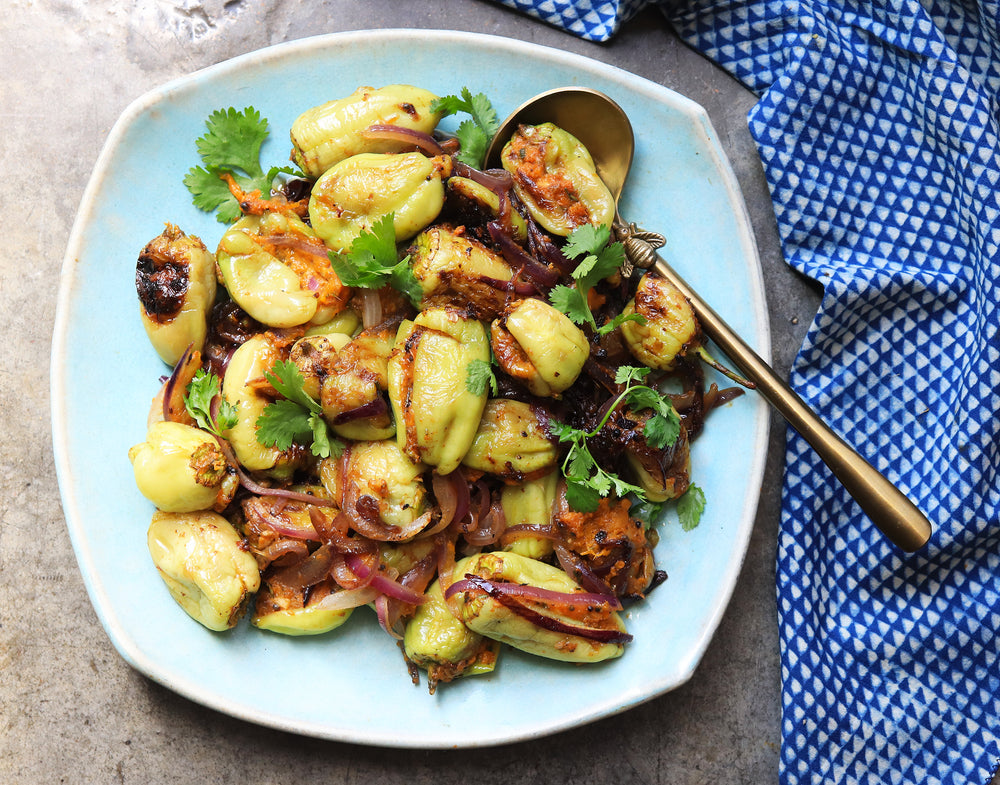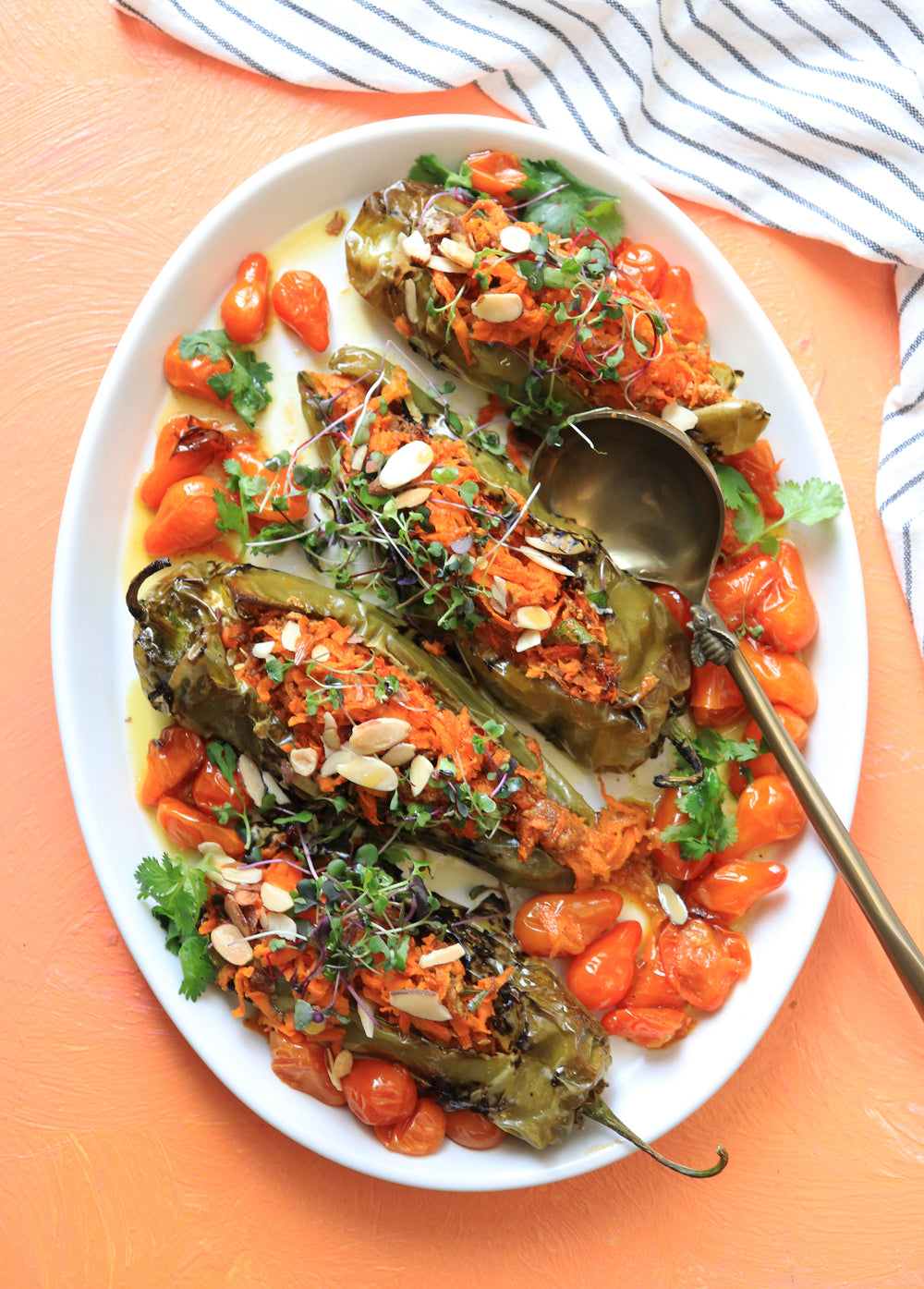
30 Min
GF
V
Mulukhiyah with Beans
Browsing at the Plant-it-Forward stand at the Urban Harvest Saturday market these past couple of weeks, a verdant large stalky bunch of greens, like nothing I’ve seen before, catches my eye. Constant, the proprietor of that farm tells me it’s mulukhiyah, a hearty mucilaginous green that originated in Egypt thousands of years ago. It was popular with the pharaohs (‘muluk’ means royal in Arabic) because of its nutritional density and desirable taste. Related to the okra family, the mulukhiyah is also called the jute plant or jute greens. It is now very commonly grown and used in the Levantine area that stretches from Jordan to Palestine, Israel, Syria and countries surrounding it.
Almost everyone I talk to from those parts of the world say they have only seen mulukhiyah frozen or dried here in the US, never fresh. Seldom eaten raw and usually without the stems, it is chopped or pureed and stirred into chicken, meat dishes or lentil dishes. Intrigued, I find many ways to incorporate it in my cooking. I stirred it in my scrambled eggs in the morning and in a savory oatmeal. Here is a simple recipe using beans and mulukhiyah inspired by how it is used in the Middle East. Use any kind of beans from small flageolets to the more common garbanzo. Eating vegetables is vital to our health but what is just as important is eating a large variety so go get a bunch from Constant before the season ends and start enjoying it like I have!
Browsing at the Plant-it-Forward stand at the Urban Harvest Saturday market these past couple of weeks, a verdant large stalky bunch of greens, like nothing I’ve seen before, catches my eye. Constant, the proprietor of that farm tells me it’s mulukhiyah, a hearty mucilaginous green that originated in Egypt thousands of years ago. It was popular with the pharaohs (‘muluk’ means royal in Arabic) because of its nutritional density and desirable taste. Related to the okra family, the mulukhiyah is also called the jute plant or jute greens. It is now very commonly grown and used in the Levantine area that stretches from Jordan to Palestine, Israel, Syria and countries surrounding it.
Almost everyone I talk to from those parts of the world say they have only seen mulukhiyah frozen or dried here in the US, never fresh. Seldom eaten raw and usually without the stems, it is chopped or pureed and stirred into chicken, meat dishes or lentil dishes. Intrigued, I find many ways to incorporate it in my cooking. I stirred it in my scrambled eggs in the morning and in a savory oatmeal. Here is a simple recipe using beans and mulukhiyah inspired by how it is used in the Middle East. Use any kind of beans from small flageolets to the more common garbanzo. Eating vegetables is vital to our health but what is just as important is eating a large variety so go get a bunch from Constant before the season ends and start enjoying it like I have!

30 Minutes
4

Notes & Variations
- Traditionally, mulukhiyah is cooked long and slow like collard greens so give that a try also. You can also blanch it and then add it to other dishes.
- This dish can be eaten on its own or turned into a main dish by folding this mixture into rice or pasta.
- Substitute mulukhiyah with spinach, watercress or collard greens.

Notes & Variations
- Traditionally, mulukhiyah is cooked long and slow like collard greens so give that a try also. You can also blanch it and then add it to other dishes.
- This dish can be eaten on its own or turned into a main dish by folding this mixture into rice or pasta.
- Substitute mulukhiyah with spinach, watercress or collard greens.



